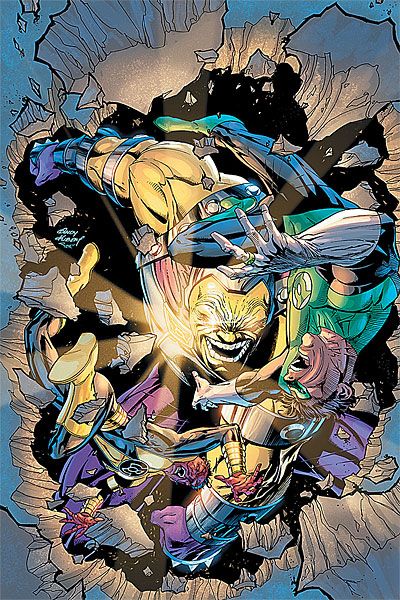Remember how, by the end of "Final Crisis," there was an outcry of "heck, Doug Mahnke should have just drawn the whole thing"?
That's the impression you're likely to get about "Blackest Night" after reading "Green Lantern" #46. Mahnke is so good at the superhero splendor and the chillingly creepy moments, that you just can't help but say, "Ivan Reis is an amazing artist, but let's see more of those Mahnke pages!" Luckily, we have nothing but Mahnke to look at in this issue of "Green Lantern," and he makes it all look bleak and terrifying and joyfully grim and still superheroic through and through.
Geoff Johns gives us Lanterns of all shapes, sizes, and colors here, though Sinestro and his yellow Corps play a heavy role, and Mahnke's crisp, yet gritty, pencils turns the whole issue into the cosmic psychodrama that it absolutely needs to be. This "Blackest Night" storyline is half a step away from ridiculous contrivance, but Mahnke keeps it from feeling as goofy as it might.
And certainly Johns does an excellent job making this story seem epic and yet keeping it focused on the characters within the story. It's about -- at least in this issue -- Hal Jordan and Carol Ferris and Sinestro. These characters have complex relationships to one another, and Johns emphasizes the core of those conflicts while setting larger wheels in motion.
Larger wheels like Mongul's attempt to seize power in the Sinestro Corps ranks. Or like the far-reaching legacy of Abin Sur.
Johns continues to show himself to be a master at the forward-momentum tie-in stories. This is an issue where things happen -- it's not just a "meanwhile, at the Green Lantern Corps ranch" story, and it's an issue where the things that happen matter, emotionally, to the characters involved.
It may be completely absurd superhero melodrama, but it's a straight-faced, sincere approach to the genre and it works. It works in the way that high Romanticism can work, when executed by skilled craftsman working on projects they love.
And the enthusiastic sincerity comes across in the narrative. It's infectious.

